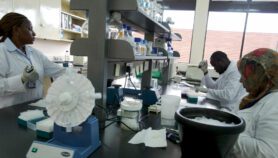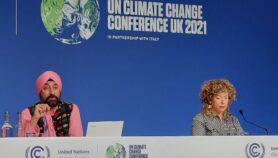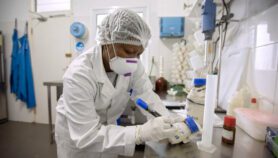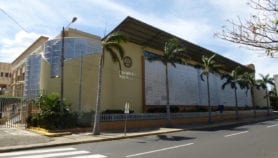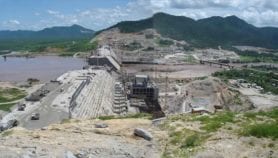By: Alex Dehgan
Send to a friend
The details you provide on this page will not be used to send unsolicited email, and will not be sold to a 3rd party. See privacy policy.
As the Obama administration enters a second term, Alex Dehgan describes how USAID will build on its science-for-development agenda.
The world has undergone much change in the 51 years since President John F. Kennedy set out his vision for foreign assistance by creating the US Agency for International Development (USAID).
Despite great gains in agricultural productivity, health and poverty alleviation, we now face new challenges from population growth, the demands of the growing middle classes and global mobility that is fuelling infectious diseases, climate change and environmental degradation. It is also an increasingly more complex world, and we need new tools and approaches to tackle this.
SPEED READ
- There has been a robust science effort from USAID during Obama's first term
- The agency plans more research on new technologies in second term, subject to budgetary approval
- Change is long-term and needs support from Congress, defence
The democratisation of science and technology (S&T) gives us robust responses to these issues. The cost and availability of technology such as computing is decreasing rapidly, while its power is increasing exponentially.
But development agencies have been slow to capture this power. USAID has sought to change this within its own work, both during President Barack Obama's first term and now in his second.
Achievements so far
The Obama administration has made restoration of scientific and technical excellence within development a cornerstone of its efforts. This was exemplified by appointing the first dedicated S&T advisor to the administrator of USAID in two decades — the post I hold — and the creation of an S&T office within the agency's bureau of policy, planning and learning.
Overall, the revitalisation of S&T at USAID has been guided by a single question: how we can improve the efficacy and decrease the costs of development by harnessing S&T.
First, we have sought to use data to improve our understanding of development challenges. USAID has hired its first geographer and established the Center for the Application of Geospatial Analysis for Development (GeoCenter) and we are coupling this work with other types of analytics (such as from low-cost wireless sensors, demographic data, remote sensing and environmental data).
Second, USAID is focusing on solving audacious challenges with an open innovation approach to broaden the pool of solvers and with solutions to accelerate the innovation process and capture the power of S&T. Schemes such as Grand Challenges for Development focus on disruptive and transformational technologies, rather than incremental solutions.
Third, we have developed new approaches to research that harness the power of our federal science agencies — initially the National Science Foundation and the National Institutes of Health — and are gathering scientists around the globe to address development challenges.
Around these three pillars, USAID has recently funded seven university-based development laboratories as part of our Higher Education Solutions Network.
Now on the agenda
As the Obama administration moves into its second term, S&T will be a continuing and critical component.
Immediately after the presidential election last month (6 November), the S&T office was elevated to independent status, reporting directly to the administrator. This was the next step in a strategy to centralise S&T and innovation within USAID and build a new, robust institution to champion science and catalyse new approaches.
We will continue to build on investments in data, open innovation and research, and more deeply connect with the university community. This will be coupled with investments (subject to the approval of the US Congress) to accelerate the introduction of new technologies that leapfrog traditional infrastructure — much as mobile phones did over landlines — and help bring them to scale.
In health they could include new tools for diagnostics — such as microscopes with mobile communications, and labs on a chip — and better delivery of vaccines and treatment. For education, we may develop low-cost tablet computers and other mobile platforms to create more interactive approaches to learning. And within agriculture we could include new breeds of plants that produce more nutrients with less environmental impact.
As many development problems are interconnected with governance, USAID will also use technology to increase transparency and empower citizens. The world is on the brink of a sensor and satellite revolution that will create the equivalent of a real-time Google Earth, allowing us to see if governments are pillaging natural resources and how the environment is changing.
A new and essential discipline
Development must not seek to repeat the industrialisation of the past: we must focus on building the economies of the future. To do this, USAID and other agencies should foster a new synthetic discipline of development science and engineering.
Unlike 'appropriate technology', this embraces world-class design and technology; addresses questions of scale, demand and sustainability within a multidisciplinary approach; and brings together doctors, scientists, engineers, designers, economists, entrepreneurs and anthropologists.
So USAID's push for S&T will have its own challenges.
The agency is a decentralised institution, and change takes time. As with most scientific investments, there may not be immediate impact (the Internet took decades to develop and no one could have predicted its ultimate use and impact).
To make such investments we will need long-term support from our partner institutions in diplomacy and defence, from the US Congress, from the global scientific community and the private sector, and from the American people. This support is not guaranteed in a time of austerity and introspection.
But investments in scientific training and higher education will help build the next generation of leaders in the developing world.
Science is ultimately an optimistic discipline, as is development. We believe our future is bright because of our investments in science — because we dare to be ambitious and because there is no alternative for our success.
Alex Dehgan is the science and technology advisor to the administrator of the US Agency for International Development (USAID), and heads the office of science and technology within the agency's new bureau of policy, planning and learning.








